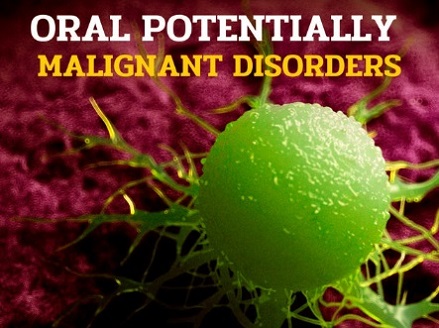Indonesian Study Explores Viruses and Their Link to Oral Potentially Malignant Disorders
Nikhil Prasad Fact checked by:Thailand Medical News Team Feb 18, 2025 1 month, 3 weeks, 4 days, 11 hours, 15 minutes ago
Medical News: Understanding the Silent Threats in the Mouth
Oral health is not just about cavities and gum disease. A growing concern in the medical field is Oral Potentially Malignant Disorders (OPMDs), conditions that increase the risk of developing oral cancer. Recent research from Universitas Padjadjaran, Bandung, Indonesia, has shed light on how certain viruses might be linked to these conditions. The study reviewed scientific data to explore whether viruses such as human papillomavirus (HPV), Epstein-Barr virus (EBV), hepatitis B virus (HBV), and herpes simplex virus (HSV) play a role in either the development or progression of these disorders into cancer.
 Indonesian Study Explores Viruses and Their Link to Oral Potentially Malignant Disorders
Indonesian Study Explores Viruses and Their Link to Oral Potentially Malignant Disorders
This
Medical News report reveals how infections could contribute to oral cancer, a disease that remains a major health challenge worldwide. With oral cancer responsible for 90% of all cancers affecting the mouth, identifying risk factors such as viral infections is critical for prevention and early intervention.
What Are Oral Potentially Malignant Disorders
OPMDs refer to a group of conditions that can potentially turn into cancer over time. Some of the most common OPMDs include:
-Leukoplakia (white patches in the mouth)
-Erythroplakia (red patches that are more likely to become cancerous)
-Oral lichen planus (OLP) (an inflammatory condition with white lacy patches and sores)
-Oral submucous fibrosis (OSMF) (a condition that makes the mouth stiff and leads to difficulty in opening the mouth)
The study reviewed 28 scientific papers and found that viruses were detected in about 78.57% of OPMD cases. This means that viral infections could be influencing the development of these disorders, either by contributing to their formation or by increasing their risk of becoming cancerous.
The Role of Viruses in Oral Disorders
Among the viruses studied, HPV and EBV showed the highest presence in OPMDs. HPV was detected in 0% to 86.6% of cases, while EBV was found in 8% to 95.7% of cases. This suggests that these viruses could play a significant role in oral disease.
-HPV (Human Papillomavirus)
The most common type of HPV found in OPMDs was HPV-16 and HPV-18, which are also known to cause cervical cancer.
Some studies found HPV in more than 80% of OPMD cases, while others showed 0% presence, indicating geographical and individual differences in infection rates.
The study highlights that HPV may be linked to the development of OPMDs and might contribute to their transformation into oral squamous cell carcinoma (OSCC), the most dangerous type of oral cancer.
-EBV (Epstein-Barr Virus)
EBV, a virus commonly associated with mononucleosis (the "kissing disease"), was found in up to 95.7% of OPMD samples.
gt;
This suggests a possible role of EBV in stimulating abnormal cell growth, which might lead to cancer.
-HBV and HSV (Hepatitis B Virus and Herpes Simplex Virus)
HBV was found in 6.71% of OPMD cases, indicating a potential but lesser-known link between chronic liver infections and oral disorders.
HSV, commonly associated with cold sores, was detected in 1% of cases, raising the question of whether this virus could contribute to oral cancer in the long run.
Lifestyle Factors and Viral Infections
The study also examined how lifestyle choices interact with these viral infections. The most significant risk factor for OPMDs was tobacco use, whether through smoking or chewing. Other contributing factors included:
-Alcohol consumption, which increases the absorption of cancer-causing substances in the mouth.
-Poor oral hygiene, which can make infections worse.
-Weakened immune system, making it easier for viruses to persist and cause cellular changes.
-Among the studies analyzed, 74.3% of OPMD patients were tobacco users, and 90.91% had a history of alcohol consumption. These behaviors, combined with viral infections, could significantly increase the chances of developing oral cancer.
Can Viruses Cause Oral Cancer
While the presence of viruses in OPMDs is high, scientists are still debating whether viruses directly cause these conditions to turn into cancer. Some research suggests that viruses like HPV disrupt the normal functioning of cells, allowing them to grow uncontrollably. However, not all people infected with these viruses develop cancer, meaning that other factors such as genetics, immune response, and lifestyle habits might also play a role.
Another important finding was that viruses were more frequently detected in advanced stages of oral cancer than in early-stage OPMDs. This raises the possibility that viruses might be more involved in the progression of cancer rather than its initial development.
What Does This Mean for the Future
Understanding the role of viruses in oral disorders opens new doors for prevention and early detection. If viruses are proven to contribute to oral cancer, vaccinations (such as the HPV vaccine), antiviral therapies, and improved screening methods could help lower the risk.
Public health strategies should also focus on:
-Raising awareness about the risks of HPV, EBV, and other viruses in oral health.
Encouraging regular dental check-ups to detect OPMDs early.
-Promoting smoking and alcohol cessation programs to reduce exposure to cancer-causing agents.
-Developing better diagnostic tools to detect viral activity in OPMDs before they progress to cancer.
Final Thoughts
The study confirms that viruses, particularly HPV and EBV, are frequently detected in Oral Potentially Malignant Disorders. However, whether these infections directly cause oral cancer or simply contribute to its progression remains uncertain. More research is needed to determine the exact relationship between viral infections and malignant transformation in oral diseases.
Preventive measures such as good oral hygiene, avoiding tobacco and alcohol, and getting vaccinated against HPV could be crucial in reducing the risk of oral cancer.
The study findings were published in the peer-reviewed journal: Cancer Management and Research.
https://www.tandfonline.com/doi/full/10.2147/CMAR.S485418
For the latest on Oral Cancers, keep on logging to Thailand
Medical News.
Read Also:
https://www.thailandmedical.news/news/medical-researchers-in-thailand-discover-that-ebv-induced-linc00944-plays-a-key-role-in-oral-cancer-progression
https://www.thailandmedical.news/news/breakthrough-research-on-exosomes-and-their-role-in-oral-cancer
https://www.thailandmedical.news/news/potential-role-of-herbs-and-phytochemicals-in-treating-oral-cancer
https://www.thailandmedical.news/news/thailand-medical-researchers-study-seaweed-caulerpa-lentillifera-for-oral-cancer-treatments
https://www.thailandmedical.news/pages/thailand_doctors_listings
